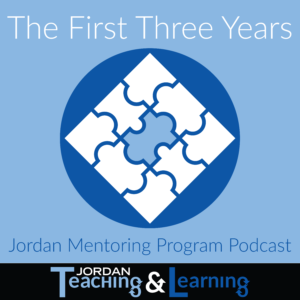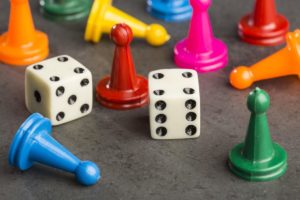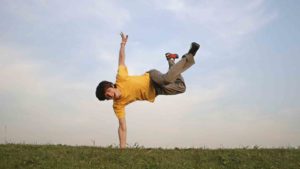Blog
Hip, Hip, Hurray!

Thank you for everything you have done this year to help students be successful, we celebrate your success, ingenuity, and hard work! Hip, Hip, Hurray! Hip, Hip, Hurray!
Summer break is here, and it is a time to relax! Especially this year it will be important for you to unwind and become a healthier you. The pandemic has taken its toll on mental and emotional health, and perhaps even physical health.
We hope you enjoy time away from the classroom. Do something physically rejuvenating like walk every morning, bike, aerobics or swim.
Now that you have had your Covid vaccine, you can get away, vacation to the mountains, the lake, or a national/state park. Visit the zoo, the aviary or the Living Planet.
Take some alone time, read a favorite author, meditate, breathe.
Do spend time with those you love or haven’t seen in a while. Reacquaint with friends and enjoy their company. Eat at your favorite restaurant.
Get plenty of sleep, drink lots of water, eat generous amounts of fruit and colorful vegetables, enjoy family time.
May this summer be relaxing and joyful. Come back refreshed, happy, and enthusiastic. Thank you again for all you have done for children. You have been amazing!!
With gratitude, your district mentor teacher specialists,
Debbie Fisher, Judy Jackman, Trisha Tingey, Amy Wood
Ideas for Whole Group Discussions
- Hand-raised discussion
This strategy allows students to raise their hands to answer the questions
- Teacher Call Discussion
This strategy allows for everyone to be prepared to answer questions randomly. Always announce this type of discussion so the students know to listen and be prepared. Be careful to ask easy questions for those who struggle.
- Head-to-head Discussion
This strategy allows students to talk with partners to discuss the question the teacher has asked. This is a good strategy to have before the whole group discussion.
- Sticky Note Discussion
This strategy will help you monitor class discussions--making sure everyone participates and nobody dominates.
Procedures:
- Give all students three sticky notes on the front of their desks.
- Each time they make a comment they will move one of the sticky notes to the other side of their desks.
- One comment = one sticky note.
- The rule is that everybody must use at least ONE sticky note, and nobody can use more than THREE.
- The teacher can move around the class and see who has used all their comments and who needs to be encouraged to speak up.
- Consider asking a very open-ended, easy opinion question directly to students who have not commented as the discussion draws to a close.
https://minds-in-bloom.com/10-classroom-discussion-techniques/
https://www.edutopia.org/blog/make-class-discussions-more-exciting-richard-curwin
Episode 7: Helping Students Thrive During Testing
 In this episode of The First Three Years, we talk about test anxiety and how it can affect teachers and students. We interview Brooke Anderson, JSD Evaluation, Research, and Accountability Teacher Specialist, about how teachers should view end of year testing and ways to help calm any anxiety about the tests. We also interview McKinley Withers, JSD Administrative Specialist Health & Wellness, about how teachers can support their students through testing.
In this episode of The First Three Years, we talk about test anxiety and how it can affect teachers and students. We interview Brooke Anderson, JSD Evaluation, Research, and Accountability Teacher Specialist, about how teachers should view end of year testing and ways to help calm any anxiety about the tests. We also interview McKinley Withers, JSD Administrative Specialist Health & Wellness, about how teachers can support their students through testing.
Both Brooke and McKinley are happy to help you if you have questions.
Podcast: Play in new window | Download
Testing our Anxiety Level
End of year testing will give information to help with planning for the next year. Here are some resources that present a positive approach to testing.
- Ideas to relieve test anxiety:
- Have class meeting prior to testing
- Allow students to ask questions about testing
- Review test-taking strategies
- Elementary—plan fun activities for rest of the day
- Secondary—Encourage teachers in non-testing classes to have a relaxed day
- When assessment works best, it does the following:
- Provides diagnostic feedback
- Helps educators set standards
- Evaluates progress
- Relates to a student's progress
- Self-evaluation motivates performance
- Ethics:
- No talking during the test.
- No leaving the room by teacher or student while tests are being administered.
- No assistance provided to students.
- Tests may not be reproduced or reviewed by the students or teacher.
- Reference materials, texts, notes, etc., may not be used unless specified.
- Students with an Individualized Education Program (IEP) may have special accommodations.
- The teacher is responsible for the security of the tests.
Step Away From The Board and Let’s Play!
The quote on my work email states,
“If a child can’t learn the way we teach, maybe we should teach the way they learn.” -Ignacio Estrada
This has always been my goal, but since I have been researching for this blog, I have found renewed energy to really put this quote into action. One article I read, “Does Our Natural Affinity for Games Have a Place in the Classroom?” by Adam Moler, really sparked a new flame. He talks about incorporating gaming into the classroom. I think most of us “more seasoned” teachers remember playing The Oregon Trail simulation. I remember being excited for choosing the correct gear to take across the plains in my wagon and using my mistakes to plan better for the nest trip. It was THE educational game of the 80’s! It was gaming when gaming wasn’t popular. Now that gaming is popular, where is the application in the classroom?

Moler suggests that we bring back the Oregon Trail idea with a renewed gaming facelift. This could be done by creating learning scenarios with experience points, badges, avatars, and quests. You can find his article at https://www.edutopia.org/article/does-our-natural-affinity-games-have-place-classroom
Jennifer Gonzalez https://www.cultofpedagogy.com/do-something/ , throws some teaching caution into the mix. She is worried we are teaching things that are not even found in the core. Memorizing facts, dates, events, and people need to be replaced with doing something! She stakes, “If we want our students to actually lean the facts and concepts and ideas we’re trying to teach them, they have to experience those things in some way that rises above the abstract words on paper. They have to process them. Manipulate them. To really learn in a way that will stick, they have to DO something.”
She suggests that in between the direct instruction and assessment step of our planning we start adding some of these activities:
- Sorting
- Kinesthetic work
- Discussion
- Graphic representations
- Write to learn
- Mini-projects
- Anticipation guides
- Quality note-taking
- Retrieval practice
- Collaboration
For a more detailed look at her suggestions, visit the link above and read her article, “To Learn, Students Need to DO Something.”
Episode 6: Engaging and Helping Students Thrive Through Playing and Creating
In this episode of The First Three Years, we will explore the idea of bringing back playing and creating to the classroom and the impact it can have on student learning, especially during remote learning due to COVID-19.
We interviewed Cally Flox, Director of BYU Arts Partnership, and she shared some ideas of how to get students out of their seats to better their instruction time.
Cally would love to hear about the successes you are having in your classroom as well as questions you may have about creating an atmosphere of play and create in your classroom K-12. Visit her website below for some great ideas.
Cally_flox@byu.edu
http://advancingartsleadership.com/
Music: https://www.purple-planet.com
Podcast: Play in new window | Download
Is There A Place For Play in Secondary Ed?
Play and Create 
It seems that once our students get to high school, the idea of playing and creating is a long-ago idea that got lost in the educational shuffle somewhere in elementary school. Education turned into a series of memorizing dates, facts, and periodic tables.
Is there a place for playing and creating in the high school classroom? Zaidee Stavely believes so. Not only is it good, it is imperative that students do not lose the desire to play and create in the upper grades. She looks at how students play and create in elementary school and compares it to how that would look in the secondary schools.
| Elementary School | Secondary School |
| Free Choice | Student-directed learning |
| Blocks and Legos | Maker Spaces and Fab Labs |
| Playground | Pickup sports and Jam Sessions |
| Finger-painting | Arts Integration |
| Make-Believe | Problem-Based Learning |
| Rice Tables and Sandboxes | Science Through Inquiry |
“Teenagers need creative outlets, just like elementary school children. Those experiences help open their brains in different ways, get them excited about learning and allow them to have fun. Playful learning can in turn lead to deeper engagement with school, better retention of learning and a stronger motivation to persist all the way through school.”
For a more in depth look, read Zaidee Stavely’s article "How to Bring Playfulness to High School Students"
I Made It Through My Provisional Years, Now What?
Surviving the first few years of teaching is huge! New teachers are busy during those years getting a handle on all the teaching things -- management, planning, teaming and data diving, improving engagement strategies, surviving their evaluation...the list goes on! As they get to the end of the provisional years and see all their growth, some new teachers ask the question, “Now what? What can I do to continue to grow?”
Jordan School District has some great opportunities available for teachers to continue their education and learning. There are several endorsements that are offered through the district. Some of these endorsements even tie into master’s programs. One perk of these credits is they can help you advance on the pay scale!
If you are interested in endorsements that are offered through our district, here’s a list and some contact information.
- ESL Endorsement: The ESL Endorsement is offered through Southern Utah University. Teachers can use credits from the class towards a master’s degree. For more information about this endorsement, contact Sheri Sample: sheri.sample@jordandistrict.org
- Technology Endorsement: The technology endorsement is offered through Utah Valley University. This endorsement can be used towards a master’s program. For more information on this program, contact Deanna Taylor: dtaylor@jordandistrict.org
- Gifted and Talented Endorsement: The GT Endorsement is offered through Southern Utah University and can be tied to a masters program. For more information on the GT endorsement, contact Rebecca Smith: rebecca.smith@jordandistrict.org
Elementary Endorsements:
- Math Endorsement: The math endorsement is offered through Utah Valley University. The credits earned can be used towards a master’s program. For more information on the math endorsement, contact Melissa Garber: melissa.garber@jordandistrict.org
- Reading Endorsement: The reading endorsement is offered through Utah Valley University and can also be used towards a master’s program. For more information on the reading endorsement, contact Laury Finch: laurene.finch@jordandistrict.org
Many universities around the area offer endorsement programs as well. Check their course catalogs for more information.
Episode 5: Thriving Through JPAS Reflection and Growth

In this episode of The First Three Years, we will explore JPAS and how it can help you reflect on your teaching practices so you can set realistic goals for growth. We interview three JSD principals, Shawn McLeod, Kim Searle and Tami Bird, to get a principal’s perspective on how they use JPAS to help teachers thrive.
As you receive your JPAS results; if you would like specific goal setting assistance please contact your school’s instructional coach or your mentor teacher specialists. We would be happy to help you.
Music: https://www.purple-planet.com
Podcast: Play in new window | Download
